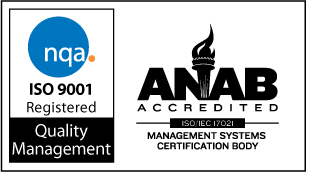|
(303)
758-2728
|
Home
> Tips
> Mechanical
Shaft Seals
|
Tip: Mechanical
Shaft Seals
With
the evolution of sealing technology over the past few decades we
are now able to use mechanical shaft seals on just about any application
that handles fluids. However, there are a number of factors to consider
when designing these seals:
- The
nature of the fluids the mechanical shaft seal will encounter
must be taken into consideration for seal design and elastomer
choices.
- The
shaft seal will need lubrication and cooling because the movement
of the rotary seal and hydraulic pressure on the seal faces will
generate heat.
- Mechanical
shaft seals that are not balanced will generate heat, wear the
faces quickly and thus quickly fail.
- If
pusher seals are handling fluids which crystallize or coke they
will be inclined to hang up on the pump shaft. This happens because
the secondary sealing member which needs to compensate for travel
when the seal faces wear will not be able to.
- The
rotary part of a mechanical shaft seal will be either a positive
or friction drive. If the wrong drive is used for your application,
the seal will quickly fail.
- The
best design for sealing pumps is to use inside mechanical shaft
seals but outside seals can be installed if the pump has a stuffing
box that is too small for the seals.
- Double
mechanical seals can be used if needed for performance optimization
and cost effectiveness.
- If
it is important for your application to have absolutely no leakage
(such as with hazardous materials), tandem seals will allow you
to set up a fail safe design with the use of alarms, shut-down
devices, etc.
- In
applications where you do not have much downtime for replacing
seals, cartridge seals can be readied and pre-set so they are
available for installation quickly.
|
Historically,
mechanical shaft seals were designed to overcome some of the problems
with packed stuffing boxes. The stuffing boxes of old would leak fluids
and the mechanical shaft seals solved that problem. Also, packed stuffing
boxes needed to have their packing materials changed frequently and
the new seals eliminated that problem; they would function until the
seal faces were worn out.
Today mechanical
shaft seals are very sophisticated. They can withstand much higher pressures
and temperatures than in the past. They can be set up so that there
is no leakage at all. And they can be used with almost every application
which uses a centrifugal or positive displacement pump.
Next,
a tip on mechanical seals.
We are located in the Denver Technological
Center in a suburb of Denver, Colorado
©1997-2017, Problem Solving Products, Inc.
Website Map | Privacy Statement
| Terms of Use
|


